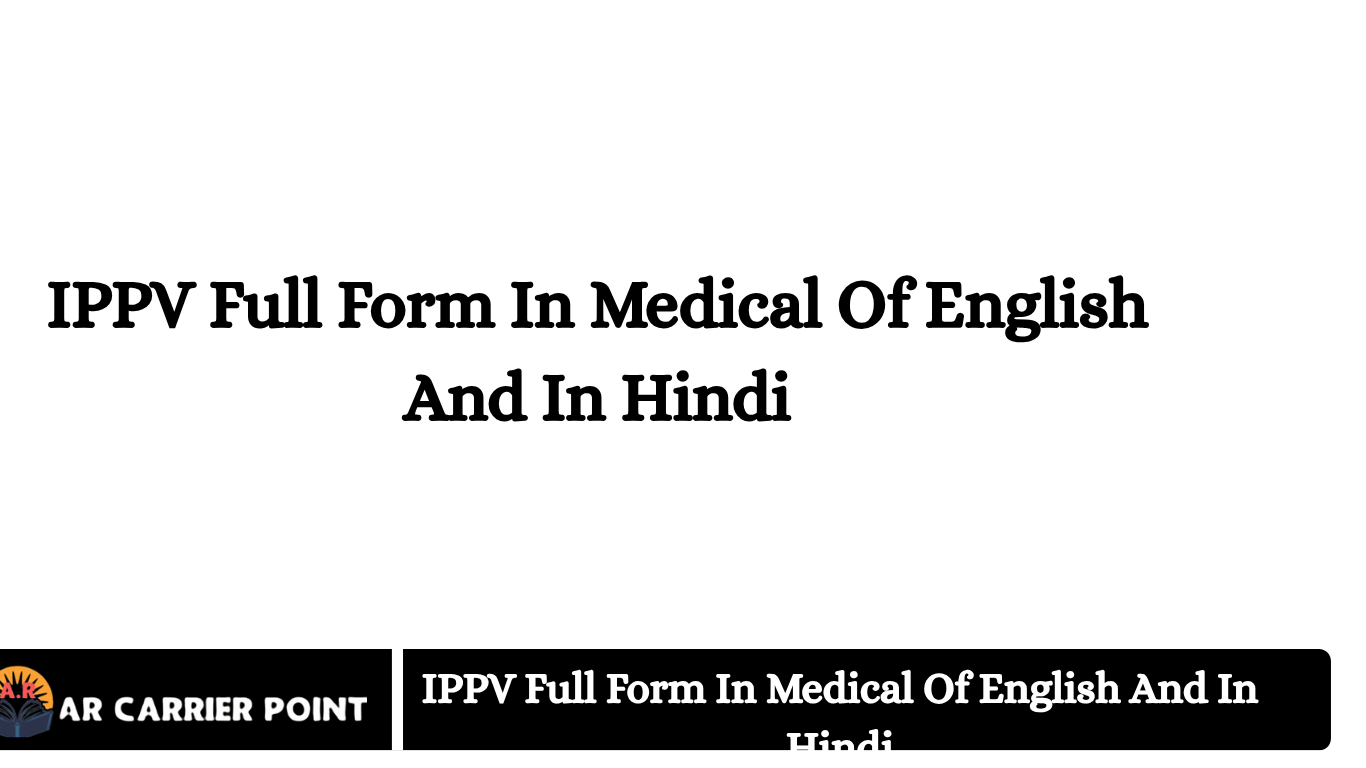IPPV Full Form In Medical Of English
IPPV stands for Intermittent Positive Pressure Ventilation in the medical field. It is a mode of mechanical ventilation used to assist or replace spontaneous breathing, especially in patients with respiratory failure, during surgery, or in intensive care settings. In IPPV, air or a mixture of gases is delivered into the lungs under positive pressure during the inhalation phase. Once the lungs are inflated, the pressure is released to allow passive exhalation. This technique ensures adequate oxygen supply and removal of carbon dioxide when the patient is unable to breathe adequately on their own.
IPPV can be administered invasively through an endotracheal or tracheostomy tube, or non-invasively using masks. It plays a crucial role in managing conditions such as acute respiratory distress syndrome (ARDS), chronic obstructive pulmonary disease (COPD), and during anesthesia. Modern ventilators precisely control IPPV settings to suit individual patient needs, improving survival and recovery outcomes.
IPPV Full Form In Medical Of Hindi
IPPV का फुल फॉर्म Intermittent Positive Pressure Ventilation है, जिसे हिंदी में “आवधिक सकारात्मक दाब वेंटिलेशन” कहा जाता है। यह एक चिकित्सीय प्रक्रिया है जिसका उपयोग उन मरीजों के लिए किया जाता है जिन्हें स्वयं सांस लेने में कठिनाई होती है या वे सांस नहीं ले पा रहे होते। IPPV में मशीन की मदद से फेफड़ों में सकारात्मक दाब के साथ ऑक्सीजन युक्त हवा पहुंचाई जाती है, जिससे फेफड़े फुलते हैं और फिर निष्क्रिय रूप से हवा बाहर निकलती है। यह तकनीक ऑपरेशन के दौरान, आईसीयू में या गंभीर श्वसन रोग जैसे ARDS (एक्यूट रेस्पिरेटरी डिस्ट्रेस सिंड्रोम),
COPD (क्रॉनिक ऑब्स्ट्रक्टिव पल्मोनरी डिज़ीज़) आदि की स्थिति में उपयोग की जाती है। यह वेंटिलेशन प्रणाली इनवेसिव (ट्यूब द्वारा) या नॉन-इनवेसिव (मास्क द्वारा) हो सकती है। आधुनिक वेंटिलेटर IPPV को मरीज की जरूरत के अनुसार नियंत्रित कर सकते हैं, जिससे बेहतर उपचार संभव होता है।
Read More: HBL Power Full Form In English And In Hindi
Frequently Asked Questions
What does IPPV stand for in medical terms?
IPPV stands for Intermittent Positive Pressure Ventilation, a method of mechanical ventilation used to support breathing.
When is IPPV used?
IPPV is used in cases of respiratory failure, during anesthesia in surgeries, or for critically ill patients in the ICU.
How does IPPV work?
IPPV delivers air or oxygen into the lungs under positive pressure during inhalation, allowing passive exhalation afterward.
Is IPPV invasive?
IPPV can be both invasive (through an endotracheal or tracheostomy tube) and non-invasive (through a face or nasal mask)
What are the risks of IPPV?
Potential risks include lung injury, infections, barotrauma, and dependency on ventilators if used long-term.
Who operates the IPPV machine?
Trained healthcare professionals like respiratory therapists, anesthesiologists, and intensivists manage and monitor the IPPV settings.
Is IPPV the same as CPAP?
No, IPPV provides breaths at intervals with pressure changes, while CPAP gives continuous positive airway pressure.
Conclusion
Intermittent Positive Pressure Ventilation (IPPV) is a vital medical technique that plays a crucial role in supporting patients who are unable to breathe adequately on their own. Whether used during surgery, in emergency care, or in critical illness, IPPV helps ensure proper oxygen delivery and carbon dioxide removal. With the aid of modern ventilators and skilled healthcare professionals, IPPV can be tailored to individual patient needs, enhancing safety and recovery outcomes. Despite some risks, when managed correctly, IPPV remains a life-saving intervention in respiratory care.


